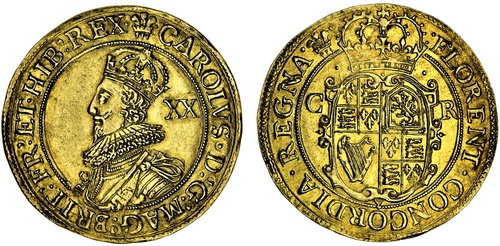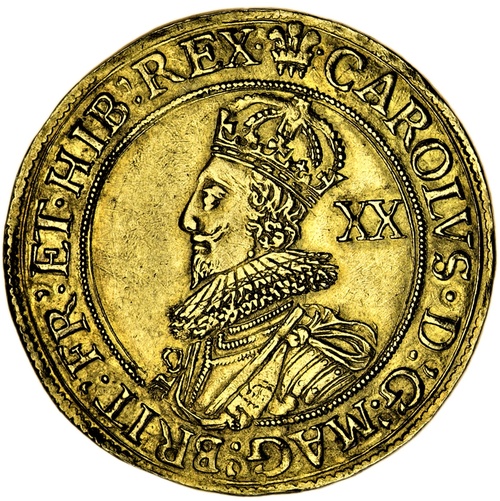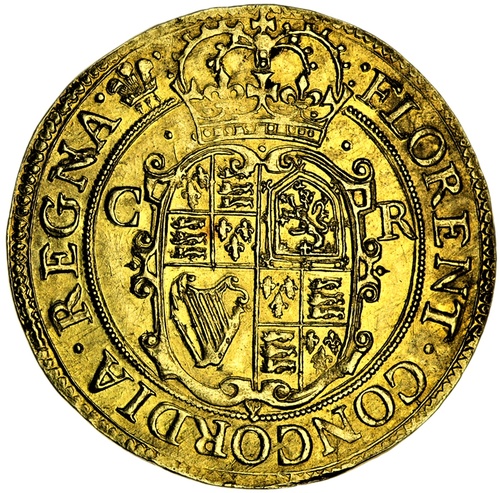Auction: 22096 - The "St Albans" Collection of English Gold Coins
Lot: 11
The St. Albans Collection of English Gold Coins | NGC AU58 | Charles I (1625-1649), Group C, Class IIa, 'Fine Work' Unite of 20-Shillings, 1630-1631, after the Model by Nicholas Briot, Tower (under King), (m.m.) •
Provenance
'A Distinguished Collection', purchased en bloc via Spink, August 2018
SJA 22, 1 October 2012, lot 413 [recté] - "the so-called Pattern or Proof, particularly well struck on a perfect round flan, featuring beautifully centred devices and a delightful portrait, extremely fine and exceedingly rare, seldom offered for sale"
Regrettably the 2012 auction listing inadvertently conflated the Carolean bust 3 and bust 3a; an easy mistake to make on account of the subtle stylistic nuances, but one that is ultimately critical in the distinction between Nicholas Briot's personal model and prototype for the Group C Coinage, and the subsidiary Fine Work strikings produced from his original canon. As testified in the recent Simon English Esq dispersal through these rooms (Spink 279, 23 January 2022, lot 190), and as reported again back at the landmark Slaney, Part I (Spink, 2003, lot 13), the 'Group C' class of gold Unites proved to be some of the most detailed but short-lived issues of Charles I's reign. As categoried by Schneider (BNJ XXVIII [1957], pp. 341-343), this complex series contains an unusually high number of "Pattern", "Proof" or even "Model" strikings for the period, all using the portraiture of Group B coinage (North 2666) as a canon.
The dies were initially prepared during the pyx mark 'heart' (26 June 1629 to 23 June 1630), with the currency strikings for Group C initiated early in 1631. However the King almost immediately thereafter altered his court attire, removing his "picardil" or ruff collar, and replacing it with soft lace. Consequently a new pattern (North 2667) was produced before the end of June 1631, clearly anticipating the adoption of a new portrait for currency - known to numismatics as the 'Group D', which entered circulation on 21 June 1632. This consequently rendered the Group C portrait obsolete leaving the designs for such little beyond the experimental stages. Whilst Schneider has only identified Class I, Bust 3 as a true "Model" striking (Schneider II, 134), the contemporary issues of Class II, Bust variety 3a displays a similarly high degree of workmanship above that which is usually encountered for currency strikings of the period. The most obvious difference being the extent of cuirass and drapery extending into the legend by BRIT, the other not noted at Slaney but established by this cataloguer for Simon English is the B .' over obliterated R in HIB present on the model, but not on the subsidiary Finework issues.
Subject to 20% VAT on Buyer’s Premium. For more information please view Terms and Conditions for Buyers.
Sold for
£32,000
Starting price
£7000









